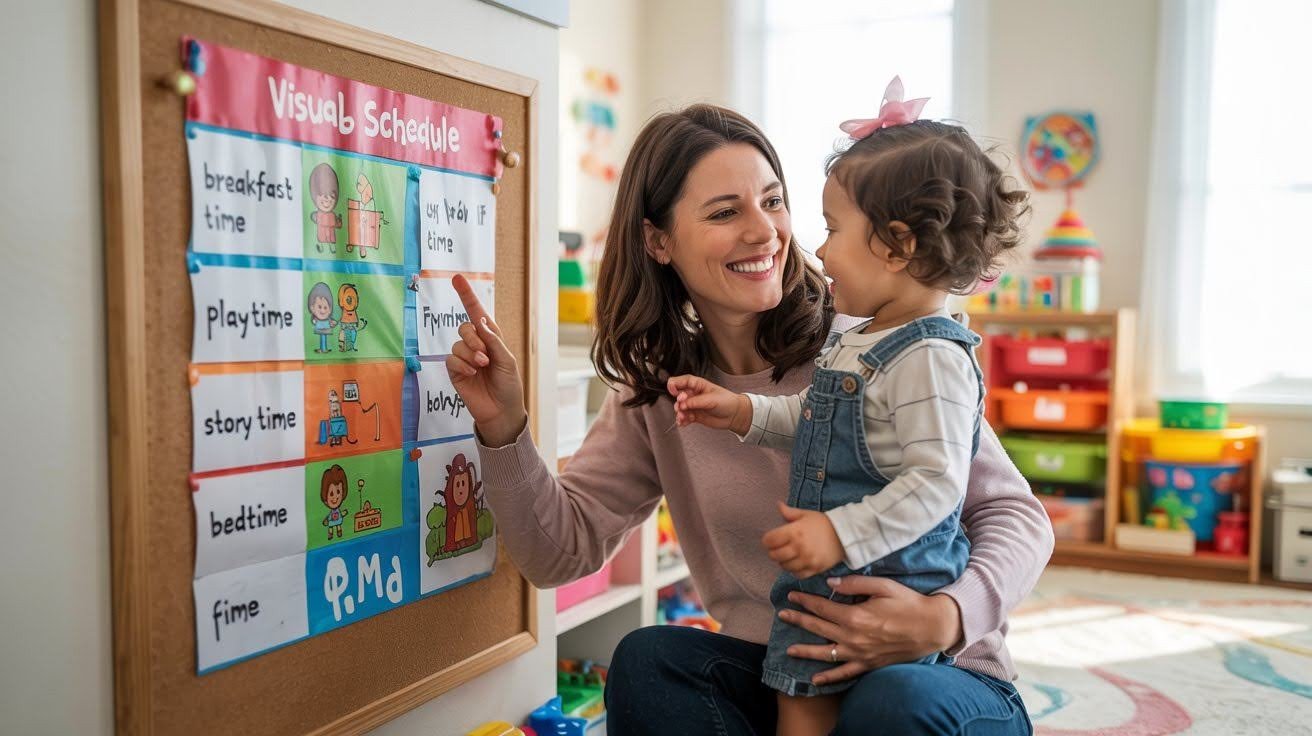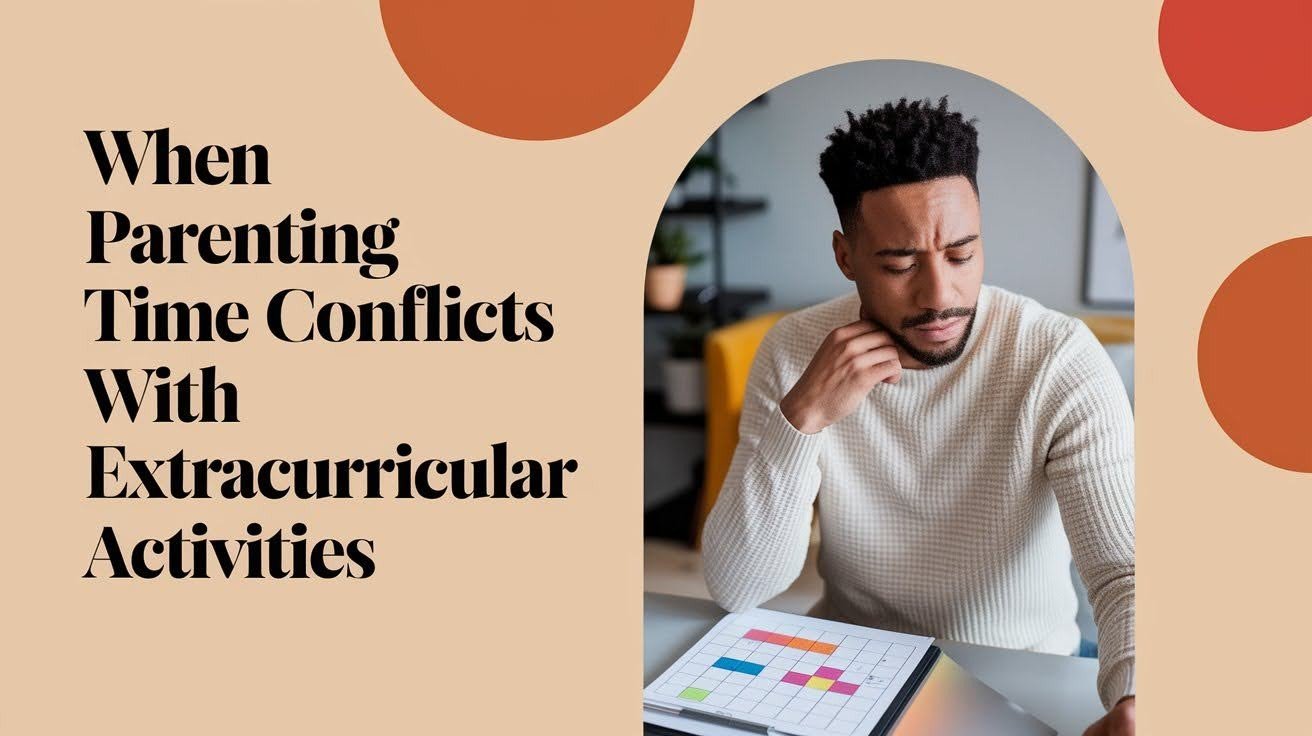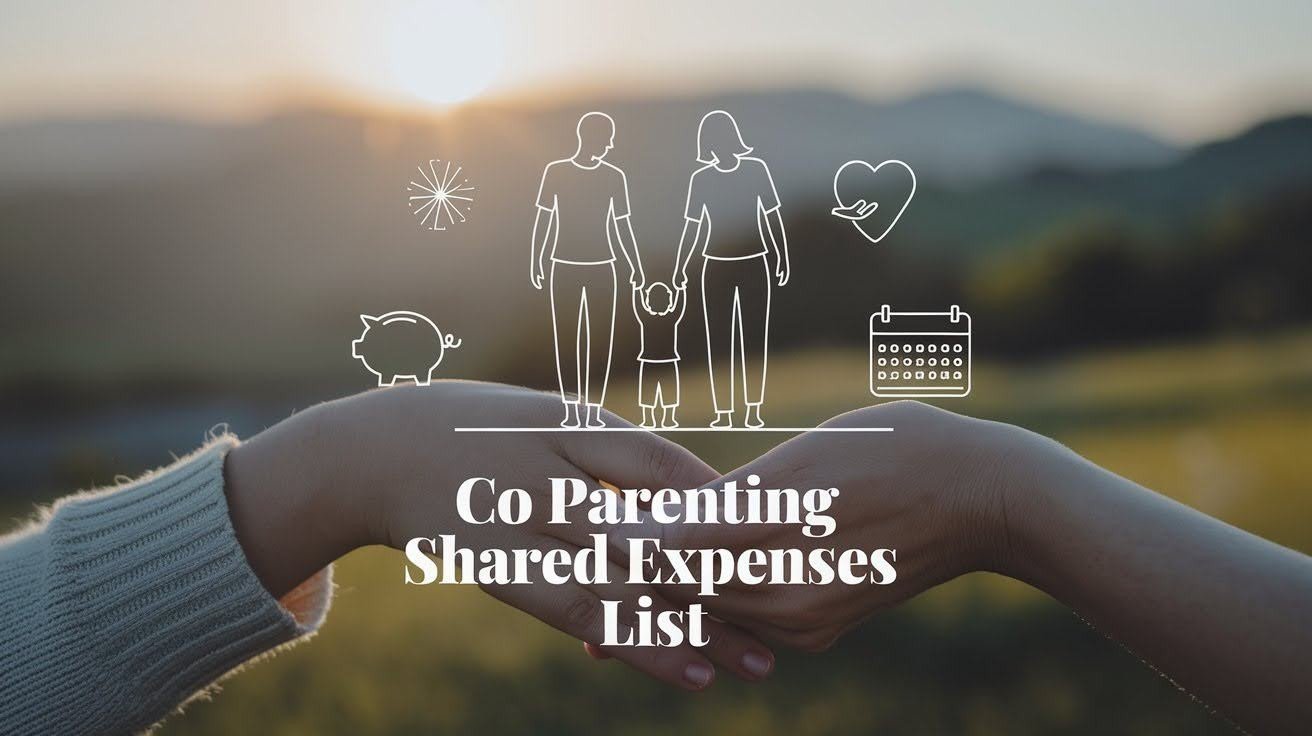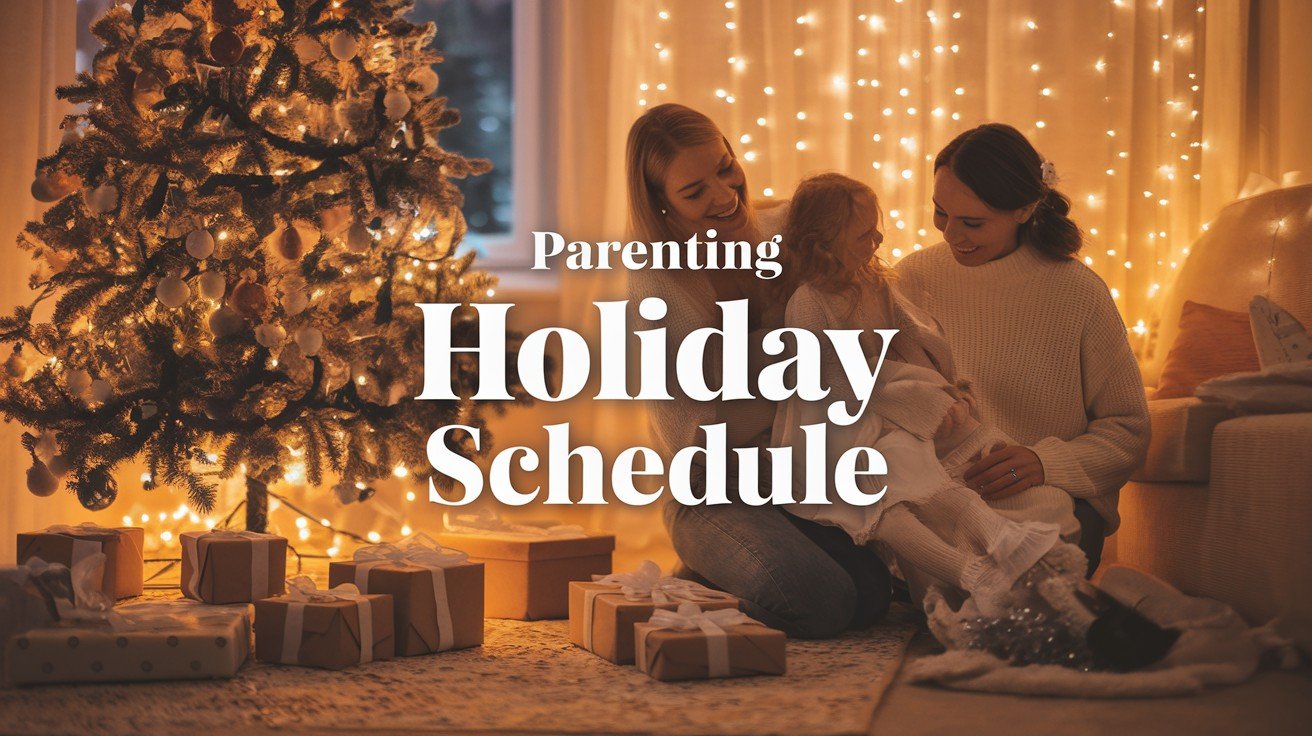Your weekend with the kids is finally here, a time you’ve been counting down to all week.Then you find out they have a soccer tournament scheduled the same weekend suddenly, your plan collides with their extracurricular activities.
The solution required putting your child’s best interest first conflict can be resolved through open communication between parents. Making a parent’s adjustment plan or seeking legal help when needed. The court may need to step in if the dispute continues. Always focus on parenting rights, obligations, and what’s fair for everyone involved.
Finding the rights balance protect both parents relationship with your children and their oppurtunities to grow through activities they love.
Smart Ways to Manage Parenting Time and Activities
Effectively managing parenting time and activities helps create a balanced, stress-free, and meaningful family life:
Create Visual Schedules and Routines

Visual schedules help children understand what comes next and reduce the constant “what are we doing now?” questions. Use pictures, charts, or apps to map out daily routines, making transitions smoother for both parents and kids. When children can see their day laid out, they feel more secure and cooperative.
This approach works particularly well for younger children who can’t yet read clocks or understand abstract time concepts. Color-coding different activities or using timers can make the schedule even more engaging. Visual cues also help children develop independence as they learn to follow routines without constant reminders.
The key is consistency. Once you establish visual routines, stick with them long enough for children to internalize the patterns and expectations.
Batch Similar Activities Together

Group similar tasks and activities into focused time blocks rather than switching between different types of activities throughout the day. For example, handle all errands in one trip, do all craft activities during a designated creative time, or tackle all outdoor play in one extended session.
This approach minimizes setup and cleanup time while maximizing engagement. Children can fully immerse themselves in activities without jarring transitions, and parents can be more present instead of constantly managing logistics. Batching also helps maintain momentum and focus.
Consider your family’s natural rhythms when batching. Some families work better with morning activity bursts, while others prefer afternoon concentrations of similar tasks.
Implement the 20-Minute Rule

Dedicate focused 20-minute blocks of uninterrupted, child-led time throughout the day. During these periods, put away phones, follow your child’s interests, and engage fully in whatever they choose to do. This concentrated attention often satisfies children’s need for connection more effectively than hours of distracted interaction.
These focused bursts help children feel truly heard and valued, often reducing attention-seeking behaviors throughout the rest of the day. Parents also find that giving intense attention for short periods feels more manageable than trying to be “on” constantly.
The beauty of this approach is its flexibility. 20-minute blocks can happen during morning play, after school, or before bedtime, adapting to your family’s schedule.
Use Activity Bins and Rotation Systems

Prepare several bins of age-appropriate activities that can be rotated weekly or monthly to maintain novelty and interest. Each bin might contain art supplies, puzzles, building materials, or themed play items. When children get bored, they can choose from available bins rather than relying on parents for entertainment ideas.
This system encourages independent play while keeping activities fresh and engaging. Parents spend time preparing bins in advance rather than scrambling for activities in the moment. Rotation prevents toy overwhelm and helps children appreciate materials more fully.
Storage doesn’t have to be fancy – simple plastic containers, baskets, or even paper bags work well for creating organized activity options that children can access independently.
Master the Art of Productive Transitions

Turn travel time, waiting periods, and transitions into opportunities for connection or learning rather than sources of stress. Keep a mental list of simple activities like storytelling, counting games, or observation challenges that require no materials but engage children’s minds.
Car rides become opportunities for audiobooks or singing sessions, while waiting at appointments can involve quiet games like “I Spy” or gratitude sharing. These micro-activities prevent meltdowns and make necessary but boring parts of family life more enjoyable.
The goal isn’t to fill every moment with structured activity, but rather to have go-to options that prevent restlessness from escalating into difficult behavior during unavoidable waiting periods.
Establish Reset Rituals

Create simple, consistent rituals that help both parents and children reset when things get overwhelming or chaotic. This might be taking three deep breaths together, doing jumping jacks, having a quick dance party, or simply sitting quietly for one minute.
These rituals provide everyone with tools for emotional regulation and prevent small frustrations from escalating into major meltdowns. When families practice reset rituals during calm moments, they become natural responses during stressful times.
Keep reset rituals simple and age-appropriate. The goal is to create a shared language and practice for managing big emotions and restoring family harmony when things get tough.
Plan for Energy Management, Not Just Time Management

Recognize that children’s energy levels naturally fluctuate throughout the day and plan activities accordingly. Schedule high-energy activities when kids are naturally more active and quiet activities during their natural low-energy periods.
Most children have predictable energy patterns – many are energetic in the morning, have an afternoon lull, and get a second wind before dinner. Planning challenging or active pursuits during high-energy times and quiet activities during natural rest periods reduces frustration and resistance.
This approach also helps parents manage their own energy by aligning demanding activities with times when children are naturally more cooperative and engaged.
Tips for Balancing Parenting Time and Activities
Balancing parenting time with daily activities can be challenging, but with some planning and mindfulness, it’s possible to create harmony and meaningful family moments:
- Create a Weekly Schedule: Plan your week to allocate time for work, family, and personal activities.
- Prioritize Quality Over Quantity: Focus on meaningful interactions rather than the number of hours spent together.
- Set Boundaries: Clearly define work, activity, and family time to prevent overlaps and stress.
- Include Kids in Planning: Let children have a say in family activities to boost engagement and excitement.
- Combine Activities When Possible: Merge tasks like exercise or errands with family time for efficiency.
- Be Flexible and Adaptable: Adjust plans as needed without feeling guilty to maintain balance.
- Schedule Downtime: Ensure both parents and children have rest and free time to recharge.
Conclusion
When parenting time conflicts with extracurricular activities, the solution lies in cooperation, not competition. Both elements play important roles in your child’s development and shouldn’t work against each other.
Successful management requires planning, open communication, and flexibility from both parents. Setting clear expectations in parenting plans and being willing to make reasonable adjustments prevent most conflicts before they start.
Remember that your child benefits most when parents work together respectfully. When private discussions can’t resolve disagreements, professional mediation or legal guidance ensures fairness while keeping your child’s well-being at the center of all decisions.
Frequently Asked Questions
Can my ex stop my child from playing sports during my parenting time?
Generally, no. Unless the activity interferes with a court-ordered schedule or raises safety concerns, both parents are encouraged to support healthy interests. Encouraging your child’s passions strengthens their confidence and keeps both parenting relationships positive.
How do parents balance weekend visitation with Saturday morning games?
Balancing games and visits works best through planning. Many parents alternate weekends, swap specific days, or agree on schedule adjustments. A little flexibility ensures your child enjoys sports while still experiencing meaningful time with both parents.
What happens if parents disagree about expensive activities like travel teams?
When parents can’t agree on costly commitments, finances, the child’s enthusiasm, or the activity’s developmental value, the child’s enthusiasm or the activity’s developmental value should guide decisions. If compromise seems impossible, legal input may be needed. Staying child-focused helps prevent unnecessary stress or resentment.
Should activity schedules override established parenting time?
Not automatically. Courts typically value both regular parenting contact and consistent participation in activities. Your child’s age, skill level, and personal growth are considered when balancing commitments. The best approach protects relationships while supporting meaningful opportunities.
When should parents seek legal help for activity-related conflicts?
Legal help becomes important when communication completely breaks down, agreements are ignored, or financial responsibilities cause conflict. Early guidance can resolve issues fairly, reduce stress, and help keep your child’s best interests at the center.








